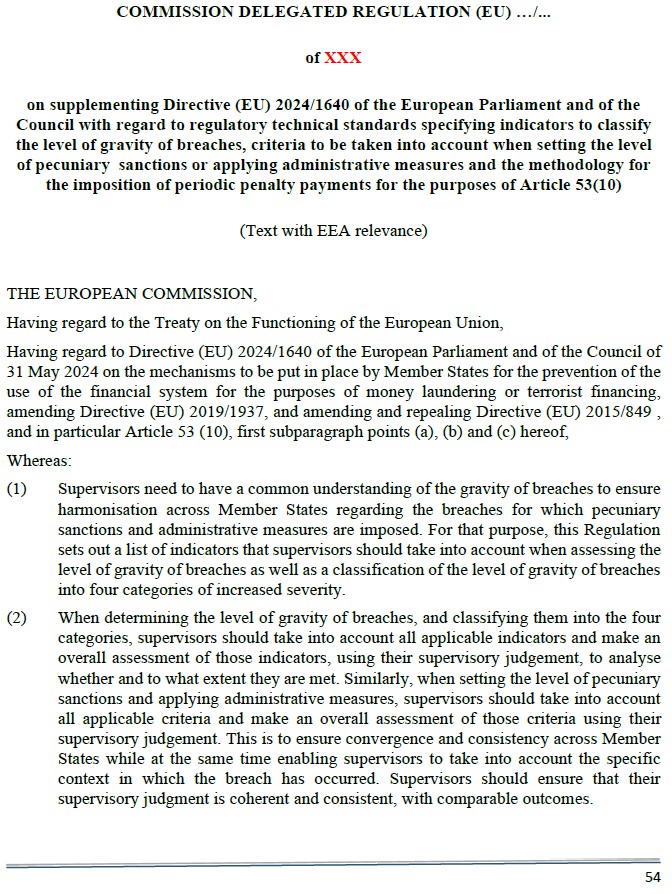
EBA Draft RTS on Pecuniary Sanctions and Periodic Penalty Payments under Article 53(10) AMLD6
The Draft Regulatory Technical Standard (RTS) under Article 53(10) of Directive (EU) 2024/1640 (6AMLD) sets out a harmonised framework for the classification of breaches, the setting of pecuniary sanctions, the application of administrative measures, and the methodology for periodic penalty payments (PePPs). It is a central element of the EU’s efforts to strengthen enforcement consistency across Member States.
What Is the Purpose of This Draft RTS?
This RTS provides national competent authorities with a common approach to:
- Classify the severity of AML/CFT breaches
- Determine the level of monetary sanctions
- Apply corrective measures and
- Impose periodic penalties for ongoing non-compliance
The goal is to ensure effective, proportionate, and dissuasive enforcement throughout the EU.
Structure and Core Elements of the Draft RTS
1. Classification of Breaches (Articles 1–3)
Breaches are assessed using standardised indicators:
- Repetition, duration, impact, systemic failure
- Involvement of senior management
- Obstruction or lack of cooperation
The severity of each breach is classified into four categories:
- Minor
- Moderate
- Serious
- Very Serious
Breaches in categories 3 or 4 are automatically deemed serious, repeated, or systematic under Article 55 AMLD6, triggering stronger enforcement powers.
2. Criteria for Sanctions and Measures (Articles 4–5)
Authorities must consider:
- The size and financial strength of the entity
- The economic benefit derived from the breach
- The presence of aggravating or mitigating factors
- The potential reputational harm to the financial system
Administrative measures may include:
- Business restrictions
- Suspension of authorisation
- Changes to governance structures
3. Methodology for Periodic Penalty Payments (Articles 6–10)
PePPs are recurring fines applied to force compliance with regulatory obligations. The RTS:
- Sets a clear process for imposing and calculating PePPs
- Requires authorities to provide a statement of findings and ensure a right to be heard
- Mandates calculation based on entity size, risk, and breach duration
- Introduces a limitation period for PePP enforcement
4. Entry into Force (Article 11)
The RTS will enter into force 20 days after its publication in the Official Journal and apply directly to all Member States.
Why This RTS Matters
This RTS ensures that AML/CFT enforcement across the EU:
- Operates on a uniform legal basis
- Targets proportionate penalties that reflect the seriousness of non-compliance
- Enables timely and effective correction of AML/CFT deficiencies
- Supports AMLA’s role in overseeing supervisory consistency
It is particularly relevant for entities under AMLA or national supervision that have persistently failed to meet AML/CFT requirements.
What Comes Next?
Once adopted, the RTS will become binding across the EU. National authorities must align their supervisory enforcement frameworks with the new classification, sanctioning, and PePP standards. Obliged entities should review their governance, reporting, and compliance protocols now to mitigate enforcement risk.
Source: